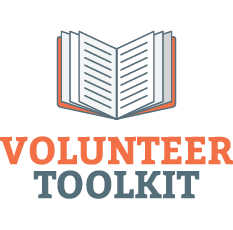Working Together in the Classroom
Communication / Volunteer Feedback
Communication is the key to maintaining strong relationships with volunteers. Communicating during the school day isn’t always easy, so find a time or a method of communicating that works best for you and your volunteer. This time should be set up in advance so that everyone knows the communication plan from the beginning. This process may look different for every teacher. Some provide an email address or set aside a few minutes at the end of the volunteer’s time to discuss any questions or concerns. The important thing is that you and the volunteer have an opportunity to share ideas and information and provide ongoing, constructive feedback.
For Teachers: Working with Volunteers in the Classroom
Volunteers are a valuable resource to support literacy instruction in the classroom. They can enhance literacy instruction by supporting educational goals, providing students with individual attention, and strengthening the bond between the school and the community. Developing plans for volunteers in advance requires extra preparation time, but, when implemented effectively, will help you, your students, and the volunteers get the most out of the experience.
When working with volunteers, it is important to set up an environment that is inviting to them and that creates an atmosphere of respect and communication. Share your instructional objectives and ways to modify instruction to fit the needs of the students the volunteer will be working with. Objectives should be clear for volunteers and appropriate for the needs of students. Setting the stage for successful volunteering will make the process much easier for you to manage.
Policies and Procedures
Volunteers should be aware of all classroom and school-wide policies and procedures. These include the following:
- Emergency procedures (fire drill, tornado drill, lockdown, etc.)
- Child abuse reporting procedures
- Confidentiality
- Discipline plan (classroom and school-wide)
- Class schedules
- Procedures for taking a student out of the classroom
- Who to go to for help
- Social and cultural backgrounds / expectations
Introduction to the Classroom
The classroom should be a welcoming place for volunteers. As they are getting started, introduce volunteers to the class and help identify any students who require special attention so that the volunteer is prepared to interact with each student appropriately. Show the volunteers where they can put their personal belongings and let them know where they can find any supplies they might need. Create a workspace for the volunteers. This can be a desk, table, or any area where they can work comfortably with students. If volunteers will be working with students outside of the classroom, show them the area where they will be working and make sure they understand the procedures for taking students out of the classroom and bringing them back.
Identify Needs
Before a volunteer comes into your classroom, identify where you need the most help. Time spent in advance planning will make the experience rewarding for you, the volunteer, and the student. What support do your students need? Are there specific students who would benefit from more individualized instruction? Are there students who need extra help completing homework or other assignments? Setting goals for volunteers before they come into the room will help make the best use of their time. Only a small portion of their time should be spent on mundane tasks; volunteers should be in the classroom to fill a need.
Matching Skills to Needs
Volunteers who have participated in this training series will come to your classroom with a specific skill set that can be utilized to increase student achievement. You are encouraged to ask volunteers which modules they have completed and which modules they were most comfortable with or enjoyed the most. Volunteers should not take primary responsibility to assure that students are receiving appropriate instruction, but you can recommend specific modules that you feel will be helpful for the volunteer. You should match students and volunteers based on volunteer skill sets and student needs to set them up for success.
Recognition
Provide opportunities for volunteers to see the impact they are making. If the students that they are working with have increased their reading scores, or did well on an assignment, share that information and let the volunteers know how they are making a difference. Be sure to thank volunteers as often as possible and plan ways to let them know their work is appreciated.
